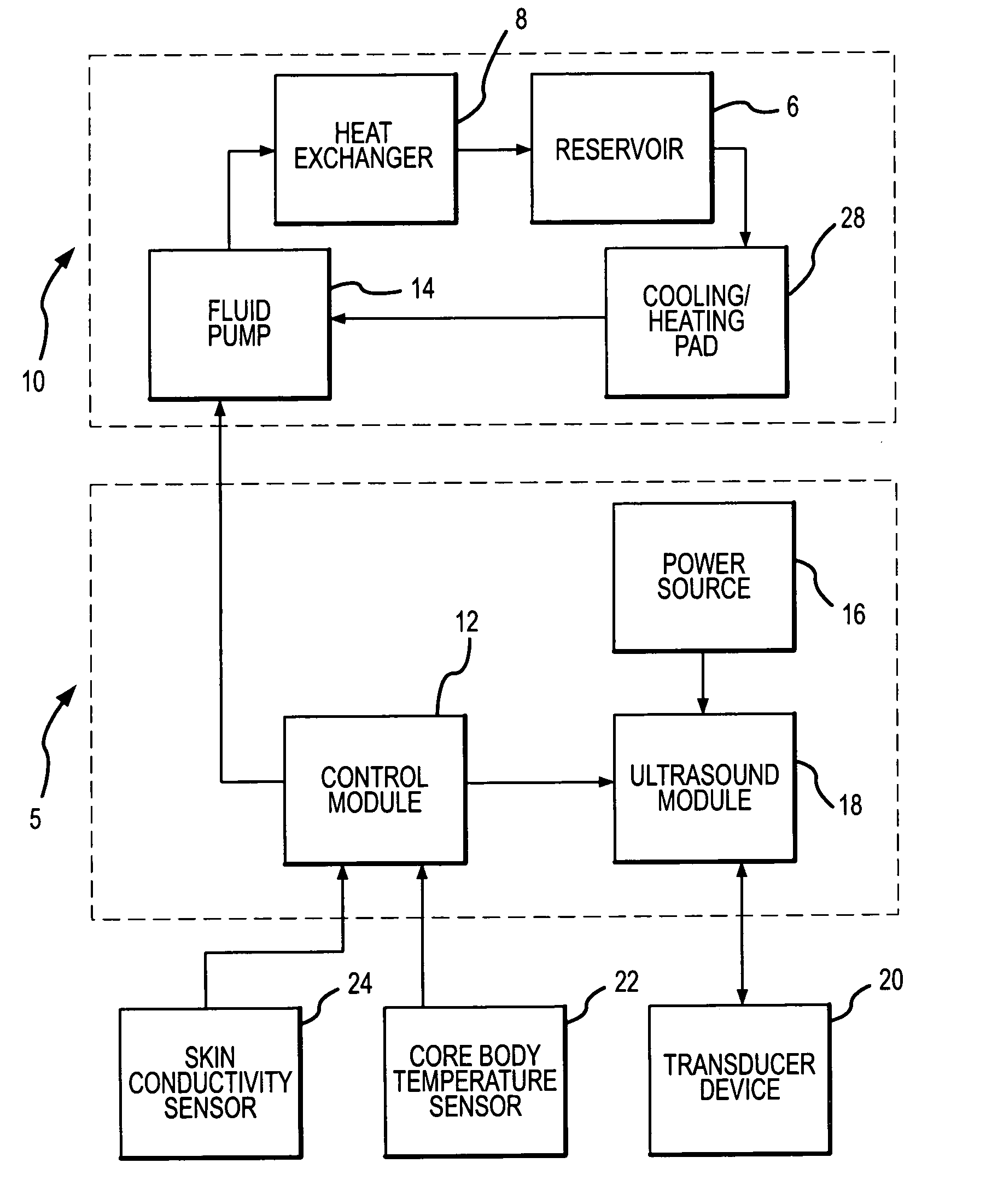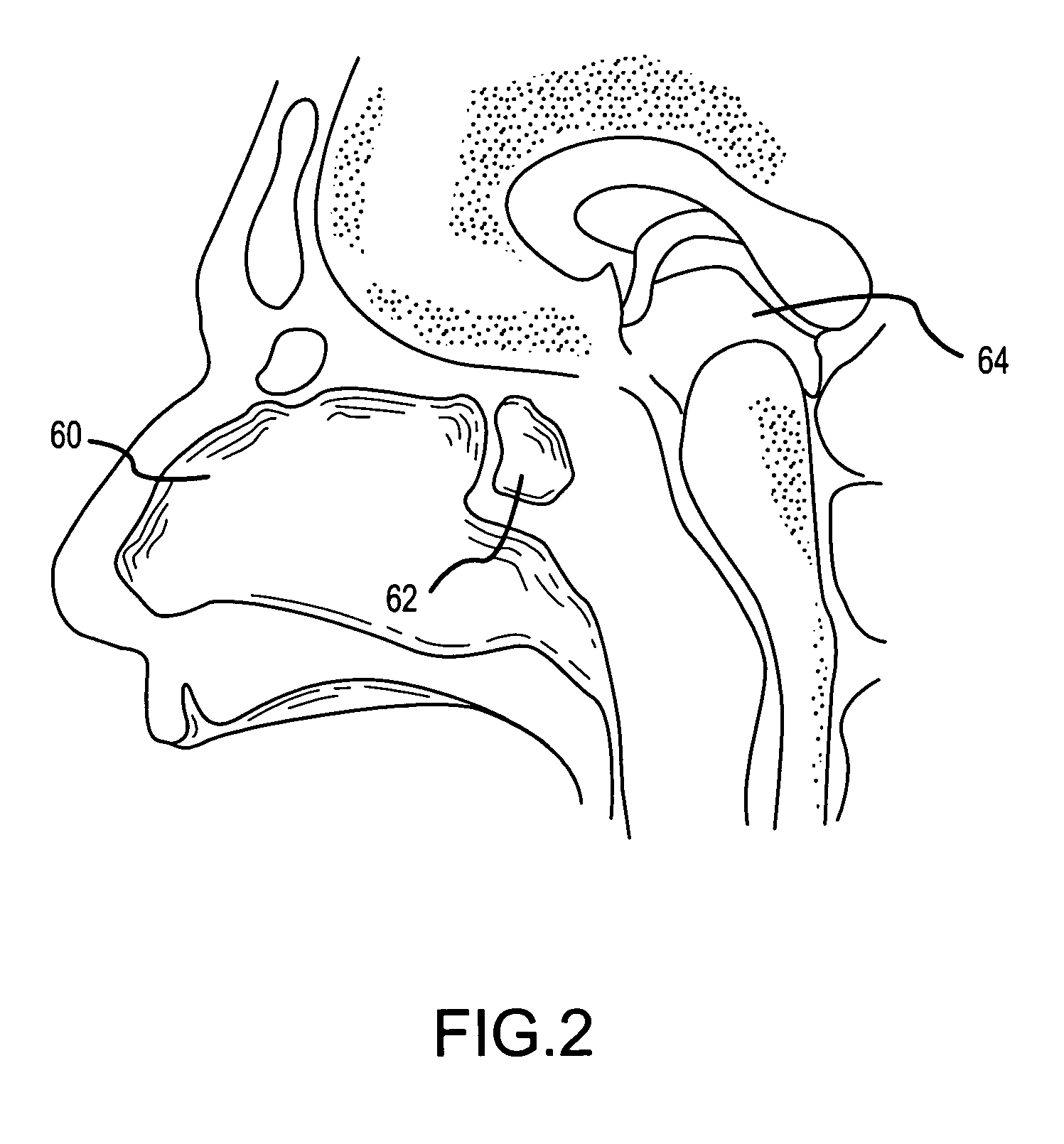Method and apparatus for providing non-invasive ultrasound heating of the preoptic anterior hypothalamus
a preoptic anterior hypothalamus and ultrasound heating technology, applied in the field of inducing mild hypothermia in, to achieve the effect of reducing the core body temperature of the patient and inducing mild hypothermia
- Summary
- Abstract
- Description
- Claims
- Application Information
AI Technical Summary
Benefits of technology
Problems solved by technology
Method used
Image
Examples
Embodiment Construction
[0028]Disclosed in FIG. 1 is a diagram for one embodiment of the POAH heating and body cooling system described herein. One application of the system is the heating of the preoptic anterior hypothalamus (POAH) through the exposure of the POAH to a source of ultrasound energy, which may be located extracorporeally to a patient's skull. In this regard, the POAH may be heated in a non-invasive procedure in order to induce mild hypothermia in a patient receiving such treatment. The PAOH heating system 5 includes an ultrasound module 18 that produces and analyzes electrical signals and an interconnected transducer device 20 for positioning relative to a patient's skull. The transducer device 20, which may include an array of transducers, converts the electrical signals from the ultrasound module 18 into ultrasound energy. The transducer device 20 may also convert ultrasound echoes into electrical signals. In any case, the ultrasound energy may be focused on the POAH for heating purposes....
PUM
 Login to View More
Login to View More Abstract
Description
Claims
Application Information
 Login to View More
Login to View More - R&D
- Intellectual Property
- Life Sciences
- Materials
- Tech Scout
- Unparalleled Data Quality
- Higher Quality Content
- 60% Fewer Hallucinations
Browse by: Latest US Patents, China's latest patents, Technical Efficacy Thesaurus, Application Domain, Technology Topic, Popular Technical Reports.
© 2025 PatSnap. All rights reserved.Legal|Privacy policy|Modern Slavery Act Transparency Statement|Sitemap|About US| Contact US: help@patsnap.com



